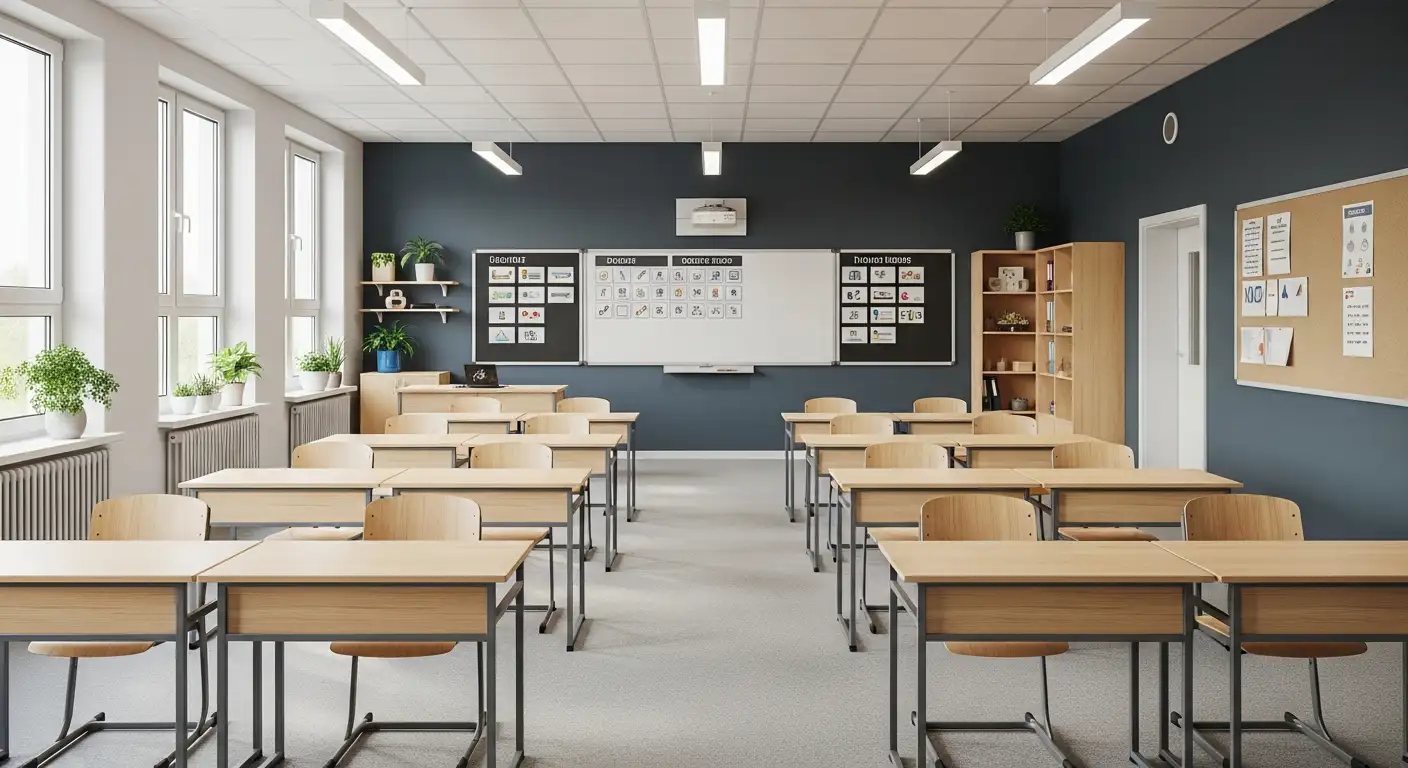Speech Therapy for Children with Selective Mutism


Understanding Selective Mutism and Its Impact
Selective mutism (SM) is a complex childhood anxiety disorder that significantly affects a child's ability to speak in specific social situations, such as at school or in public, despite being able to communicate comfortably within familiar environments like home. It typically manifests around ages 2 to 4 and can persist into adolescence and adulthood without proper intervention. This silence can hinder social development, academic progress, and emotional well-being. Recognizing the importance of early diagnosis and tailored treatment plans, speech-language pathologists (SLPs) play a critical role in assessing and guiding children through intervention strategies that address both speech and anxiety components.
Understanding Selective Mutism: Causes, Symptoms, and Diagnosis

What are the causes, symptoms, and diagnosis methods for selective mutism in children?
Selective mutism (SM) is a childhood anxiety disorder that profoundly impacts a child's ability to speak in designated social situations, such as school or public environments, even though they can speak comfortably at home or with familiar people. It often begins around ages 2 to 4 and can persist into adolescence or adulthood if not properly addressed.
The causes of SM are multifaceted, involving both genetic and environmental factors. Research suggests that children with a family history of anxiety disorders or social phobias may be more vulnerable. Psychological elements such as extreme shyness, fear of embarrassment, or traumatic experiences may contribute to the development of SM. Additionally, sensory processing issues and previous negative social experiences like bullying or separation trauma can trigger or exacerbate symptoms.
Symptoms primarily include a child's consistent failure to speak in specific social settings where speech is expected, despite speaking normally in more familiar environments. Affected children may be very quiet, avoid eye contact, and use gestures or other nonverbal communication. They often show signs of social anxiety and may be reluctant or frozen when faced with speaking demands. In severe cases, children may be unable to speak at all outside their safe zones.
Diagnosing SM requires thorough assessment by qualified professionals, such as speech-language pathologists (SLPs) and psychologists. Diagnostic methods involve comprehensive case history collection, direct observation, and the use of standardized assessment tools like questionnaires—most notably, the Selective Mutism Questionnaire. Clinicians evaluate the child's ability to speak across different settings, determine the consistency of mutism, and rule out other communication disorders or conditions such as autism spectrum disorder or language impairments.
Assessment may also include hearing screenings, oral motor evaluations, and understanding the child's overall psychological well-being. The goal is to differentiate SM from other disorders and to identify any co-occurring issues, which informs a tailored intervention plan.
The importance of early diagnosis cannot be overstated, as timely intervention increases the likelihood of successful communication development. Treatment often involves behavioral strategies, gradual exposure, and cognitive-behavioral therapy, with speech therapy playing a vital role in facilitating social communication skills.
In summary, recognizing the causes and symptoms of selective mutism and conducting detailed, multidisciplinary assessments are essential steps in supporting affected children to overcome their communication challenges and improve their social functioning.
Core Features and Diagnostic Criteria of SM

Persistent mutism duration
Selective mutism (SM) is diagnosed when a child fails to speak in specific social situations for at least one month. This duration excludes the initial adjustment period at the start of school, ensuring that the child's inability to speak is persistent rather than situationally temporary.
Exclusion of other disorders
The diagnosis cannot be explained by conditions such as autism spectrum disorder, stuttering, or other mental health issues. Children with SM are capable of speaking and understand language, but experience a severe anxiety response that prevents speech in certain settings.
Situational variability
Children with SM often speak freely in familiar, comfortable environments such as at home. However, they fail to speak in less familiar or more stressful settings like school or public places. This situational variability is a hallmark feature, emphasizing that their mutism is context-dependent rather than a global speech incapacity.
| Aspect | Description | Additional Details |
|---|---|---|
| Duration | Mutism persists for over one month | Excludes initial school adjustment period |
| Disorder exclusion | Not caused by autism, speech disorders, or other mental health issues | Speech and language abilities are typically intact outside specific situations |
| Situational variability | Speaks in some environments but not others | Usually talkative at home but mute in public or school settings |
Causes, symptoms, and diagnosis methods for selective mutism in children
Selective mutism primarily manifests as a child's consistent inability to speak in certain social contexts, such as at school or in public, while they can speak comfortably at home or with close family. The causes are complex and multifaceted, often linked to intense social anxiety, genetic predispositions, or environmental influences.
Symptoms include avoiding eye contact, using nonverbal communication strategies, and sometimes appearing frozen or 'paralyzed' when expected to speak. Children may also show signs of extreme shyness, social withdrawal, or obsessive behaviors, which can exacerbate communication challenges.
Diagnosing SM involves thorough assessment by healthcare professionals. Speech-language pathologists and psychologists utilize a combination of case history, behavioral observations, and specific instruments like the Selective Mutism Questionnaire. They also rule out other possible causes such as autism spectrum disorder or language delays.
Assessment methods typically include interviews with parents and teachers, direct observation, and sometimes standardized testing to evaluate language comprehension and production. Early diagnosis and intervention are crucial, as untreated SM can lead to social and academic difficulties, and potentially, long-term mental health issues.
Speech Therapy Approaches and Techniques for SM

What speech therapy approaches and techniques are used to treat children with selective mutism?
Treating children with selective mutism (SM) requires specialized speech therapy methods that focus on gradually reducing the child's anxiety associated with speaking in social situations. A fundamental approach involves gradual exposure techniques, such as stimulus fading and systematic desensitization. These methods help slowly introduce speaking opportunities, reducing fear and building confidence.
Behavioral strategies play a significant role in therapy. Speech-language pathologists (SLPs) often employ shaping techniques to reinforce small communication attempts, starting from gestures or imitative sounds to complete words and spontaneous speech. Reinforcement systems, including praise and rewards, are used to motivate children and make the process positive.
Specific speech techniques like the Ritual Sound Approach® (RSA) are widely used. RSA involves shaping oral movements and phonemes in a way that reduces physical and emotional barriers to speaking. This method carefully sequences sounds and movements, helping children feel more comfortable with voicing.
Augmented self-modeling is another innovative technique gaining prominence. Children watch videos of themselves speaking successfully, which helps normalize speech and decrease anxiety. This self-visualization builds self-efficacy and encourages spontaneous communication.
In addition to these techniques, therapy may include pragmatic language activities to improve requesting, turn-taking, and social interactions. Collaboration with families and teachers ensures skills are practiced across different environments, promoting generalized communication.
Overall, a multimodal, supportive approach tailored to each child's comfort level and needs maximizes the chances of successful intervention. The goal is to move gradually from non-verbal cues to confident, spontaneous speech in various settings.
Interventions and Methods in Speech Therapy for SM

What strategies and intervention methods are used in speech therapy for treating selective mutism?
Speech therapy offers a variety of targeted techniques to help children overcome selective mutism (SM). Clinicians generally use behavioral methods to gradually encourage verbal communication and reduce anxiety.
One common approach is stimulus fading, where the child is slowly exposed to speaking in increasingly challenging situations. This involves breaking down the process into manageable steps, starting from non-verbal interaction and escalating to full speech. Shaping speech behaviors is also crucial, which involves reinforcing near-matching vocalizations or words to build confidence progressively.
Positive reinforcement, such as praise or rewards, encourages children to attempt speaking without feeling pressured. Therapists may employ systematic desensitization, gradually exposing the child to speaking situations in a controlled manner. This technique helps reduce fear and builds comfort in social environments.
In addition to these behavioral strategies, structured frameworks like the Social Communication Anxiety Treatment® (S-CAT), DIR Floortime®, and other structured programs provide customized pathways for intervention. Careful assessment informs the choice of techniques tailored to each child's needs.
Collaboration with family members and educators is vital for consistency across settings. Parents and teachers are trained to implement strategy reinforcement and support at home and school.
Augmented methods such as self-modeling involve children watching videos of themselves speaking successfully, which fosters positive self-perception and reduces anxiety. For severe cases, Augmentative and Alternative Communication (AAC) devices or sign language might be temporarily used to support communication until the child feels comfortable speaking.
Overall, these methods emphasize creating a low-pressure environment where children can gradually increase their verbal skills at their own pace. The primary goal is to foster a sense of safety and trust, allowing children to develop confidence and communication skills over time.
Role of Speech-Language Pathologists in SM Treatment
What is the role of speech-language pathologists in treating children with selective mutism?
Speech-language pathologists (SLPs) are central to the assessment and treatment of children with selective mutism (SM). They perform comprehensive evaluations using both informal methods, like observation and questionnaires, and formal assessments such as the Selective Mutism Questionnaire, to understand the child's specific communication needs.
SLPs develop tailored intervention plans that aim to gradually increase the child's verbal communication. They employ various behavioral strategies, including stimulus fading, shaping, and self-modeling, to help children overcome anxiety and encourage speech in anxiety-provoking situations.
Therapeutic techniques often involve creating a supportive environment, using low-pressure activities like role-playing, and reinforcing small successes to build confidence. Augmented self-modeling, where children watch recordings of themselves speaking successfully, is also used effectively.
Collaboration with a team of professionals—psychologists, teachers, and family members—is vital. This team-based approach ensures consistent messaging and support across settings. SLPs also provide education to caregivers and educators, offering strategies to reduce stress and promote communication.
In summary, speech-language pathologists play an essential role not just in direct therapy, but also in assessment, treatment planning, and multidisciplinary collaboration. Their goal is to help children with SM communicate effectively across environments by gradually reducing anxiety and building trust in their speaking abilities.
Parental and Educational Guidance for SM Support
What guidance can be provided to parents, caregivers, and professionals to support children with selective mutism?
Supporting children with selective mutism (SM) requires a careful, encouraging approach that reduces anxiety and fosters confidence in communication. Parents, caregivers, and educators are encouraged to create a supportive environment where the child feels safe and unpressured to speak. This involves giving the child ample warm-up time before interactions and using non-verbal forms of communication initially, such as gestures or pointing, helping the child gradually ease into verbal communication.
Collaborating with speech-language pathologists, psychologists, teachers, and other professionals is essential to develop a consistent, individualized plan. Regular communication among all involved ensures that strategies are aligned and adjusted based on the child's progress. Employing positive reinforcement, such as praise, rewards, and encouragement, can motivate children to take small steps toward speaking. Activities like play, storytelling, and peer interactions serve as natural and enjoyable ways to promote social engagement.
Educating teachers and peers about SM contributes to a supportive classroom environment. When classmates understand the child's needs, they can offer patience and encouragement, helping reduce social anxiety. Creating a routine that includes gradual exposure to speaking in various settings helps children build confidence in a manageable way.
Distributing informational resources to families and schools, emphasizing the importance of patience and understanding, supports the child's emotional well-being and communication growth. Overall, a consistent, compassionate, and team-based approach makes a significant difference in helping children overcome barriers to verbal communication associated with SM.
Assessment and Evaluation Strategies Specific to SM
What assessment and evaluation methods are specific to diagnosing and planning treatment for selective mutism?
Assessing and diagnosing children with selective mutism (SM) involves a detailed, multidisciplinary process. The goal is to understand the child's communication behaviors across different environments and identify any underlying anxiety or language difficulties.
First, professionals conduct comprehensive interviews with parents, teachers, and the child. These interviews gather information about the child's developmental history, medical background, behaviors, and specific situations where mutism occurs. Observations of the child's behavior in naturalistic settings, such as at home or in the classroom, provide critical insights into when and where the child speaks or remains silent.
Functional behavioral assessments are often employed to identify triggers and environmental factors maintaining silence. Play-based activities and defocused communication techniques help reduce anxiety during assessment, making children more comfortable.
Standardized testing tools complement clinical observations. The Selective Mutism Questionnaire helps quantify severity and assess progress over time. Language assessments like the Peabody Picture Vocabulary Test (PPVT) evaluate receptive vocabulary skills, while expressive language assessments determine the child's verbal output. Psychological tools, including social anxiety measures, assist in evaluating the child's emotional state.
Medical evaluations, such as hearing screenings and examinations for physical health issues, rule out other causes of mutism. Additionally, assessments of temperament, social behaviors, and family environment shape intervention strategies.
Differentiating SM from other disorders like autism spectrum disorder or speech delays is essential. The process ensures accurate diagnosis and guides tailored treatment plans.
In summary, assessment of children with SM is a detailed process combining interviews, direct observations, standardized tests, and medical evaluations. This comprehensive approach helps distinguish SM from other conditions and provides a roadmap for effective intervention.
Addressing Comorbidities: Neurodivergent Shutdown and SM
How are comorbid conditions like neurodivergent shutdown addressed in the treatment of selective mutism?
Children with selective mutism (SM) often experience additional neurodevelopmental profiles, including episodes of neurodivergent shutdown—periods where they withdraw or become non-responsive due to sensory overload, anxiety, or other neurodivergent traits. Addressing these comorbidities requires a nuanced and individualized approach that carefully considers the child's unique neurodevelopmental needs.
Effective treatment combines targeted strategies to manage both anxiety and neurodivergent behaviors. This often involves implementing tailored behavioral interventions, such as gradual exposure to social settings, combined with sensory accommodations, like providing quiet spaces or sensory tools, to prevent shutdown episodes.
Communication supports, including visual aids and alternative communication methods, can help children express themselves when verbal speech is limited or disrupted. A central element of treatment is collaboration within a multidisciplinary team that includes speech-language pathologists (SLPs), psychologists, occupational therapists, and neurodevelopmental specialists.
This team works together to develop integrated interventions that are adaptable to the child's development level. Techniques such as social skills training, sensory regulation strategies, and anxiety reduction methods—like relaxation techniques or cognitive-behavioral strategies—are often modified to suit the child's neurodivergent profile.
Creating a supportive, predictable environment is essential. Professionals may use visual schedules, consistent routines, and gradual step-by-step goals to build confidence and facilitate engagement in social and communication activities.
Ultimately, interventions aim to be flexible and developmentally appropriate, fostering a trusting environment that encourages participation across various social contexts while respecting the child's neurodivergent traits. Recognizing and accommodating these comorbid conditions enhances the likelihood of successful communication development and emotional well-being.
A Multidimensional Approach to Supporting Children with SM
Effective speech therapy for children with selective mutism necessitates a comprehensive, empathetic, and individualized approach that addresses both the core anxiety and communication challenges. Collaboration among speech-language pathologists, mental health professionals, families, and educators is crucial to create a supportive environment, employing evidence-based techniques such as behavioral interventions, gradual exposure, self-modeling, and pragmatic language development. Early diagnosis and tailored intervention strategies significantly improve outcomes, empowering children to overcome social barriers and develop their communication skills. Continued research and resource sharing, including tools from organizations like ASHA and the Child Mind Institute, further enhance intervention success. Ultimately, fostering patience, understanding, and consistent support can help children with SM build confidence, participate fully in social and educational settings, and thrive in their everyday interactions.
References
- Speech Language Therapy and Selective Mutism - SMA
- Selective Mutism - ASHA
- Selective Mutism Speech Therapy and Treatment for Children
- Selective Mutism - ASHA
- Guide to Selective Mutism in Children - Child Mind Institute
- [PDF] Selective Mutism:
- Selective mutism – Clinical information for SLTs - RCSLT
- How to Help Your Child with Selective Mutism: 7 Tips
- Selective Mutism or Neurodivergent Shutdown? | Talkshop
Recent articles

Do Autistic People Understand Sarcasm?
Navigating the Nuances: Understanding Sarcasm and Social Communication in Autism

Autism Routines
Crafting Effective Daily Structures for Children with Autism

The Benefits of ABA Therapy for Sibling Relationships and Family Bonds
Strengthening Family Ties Through Applied Behavior Analysis

How Speech Therapy Assists with Improving Verbal and Nonverbal Communication
Unlocking Communication Potential: The Role of Speech Therapy

Supporting Autism During Transitions
Strategies and Therapies to Navigate Transitions for Children with Autism

Low-Functioning Autism
Understanding Support and Therapies for Autism Spectrum Disorder Level 3

